

Damion Smy
Boxy new KGM Musso unveiled to take on HiLux and Ranger ahead of Australian launch
14 Hours Ago
Subaru's first electric vehicle is finally here – but has it arrived here a day (or almost two years) late and a dollar short?

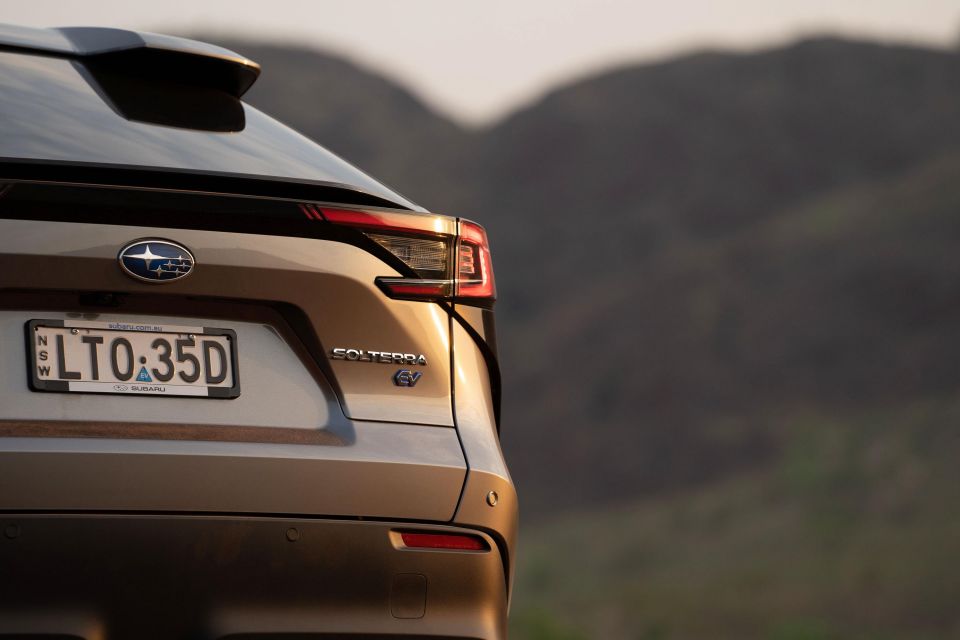

Quickly see how this car stacks up against its competition. Select any benchmark to see more details.
Where expert car reviews meet expert car buying – CarExpert gives you trusted advice, personalised service and real savings on your next new car.
The Subaru Solterra is finally here, along with its Toyota bZ4X sibling.

The two SUVs, co-developed by Subaru and Toyota, enter a segment that is teeming with new options with more still to come, but still completely dominated by the Tesla Model Y.
Last year, Tesla sold 28,769 Model Ys in Australia. That made it not only the best-selling mid-sized electric SUV (the Kia EV6 was a distant second with 1831 sales), but it was also the sixth best-selling vehicle overall in Australia.
People like what Tesla is selling, and the American brand can bring in plenty of Model Ys in from China.
The Solterra was revealed back in 2021, and went on sale in 2022 in markets like Japan. It’s therefore arriving here quite late, much as Ford dragged its feet bringing the Mustang Mach-E here and Volkswagen’s ID.4 is still several months away.
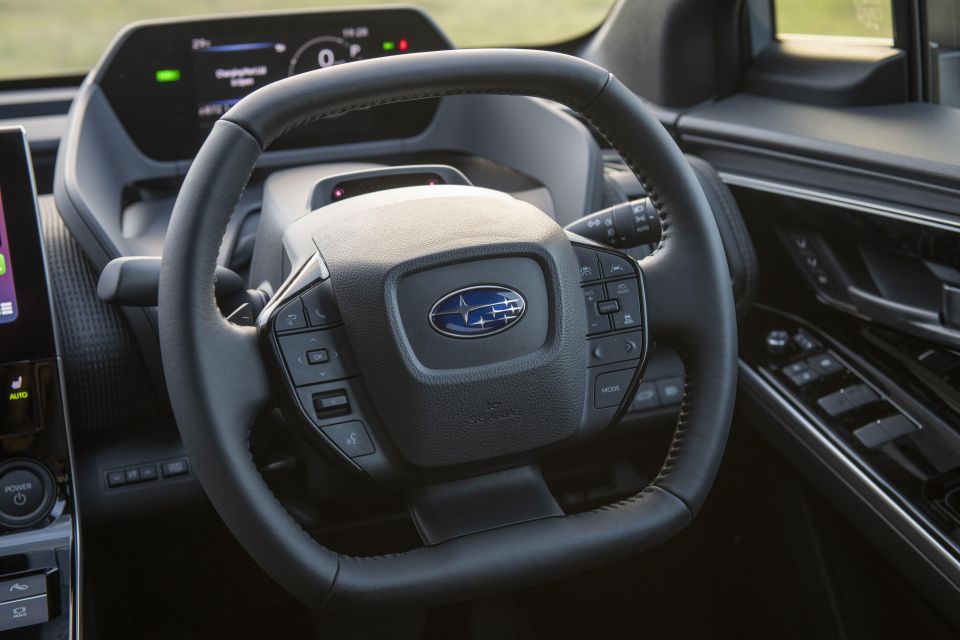
So the Solterra has arrived here late, but is it fashionably late?
First impressions are that it’s handsome in a nondescript way. It looks a bit RAV4-esque, and the plastic cladding is perhaps the most daring (and ugliest) touch on a fairly conventional-looking design.
Personally, I think it’s the better looking of the Toyabaru twins.
The Solterra is available with one powertrain but two trim levels – recent price cuts of $8000 and $7000 respectively have made it a much more palatable option.
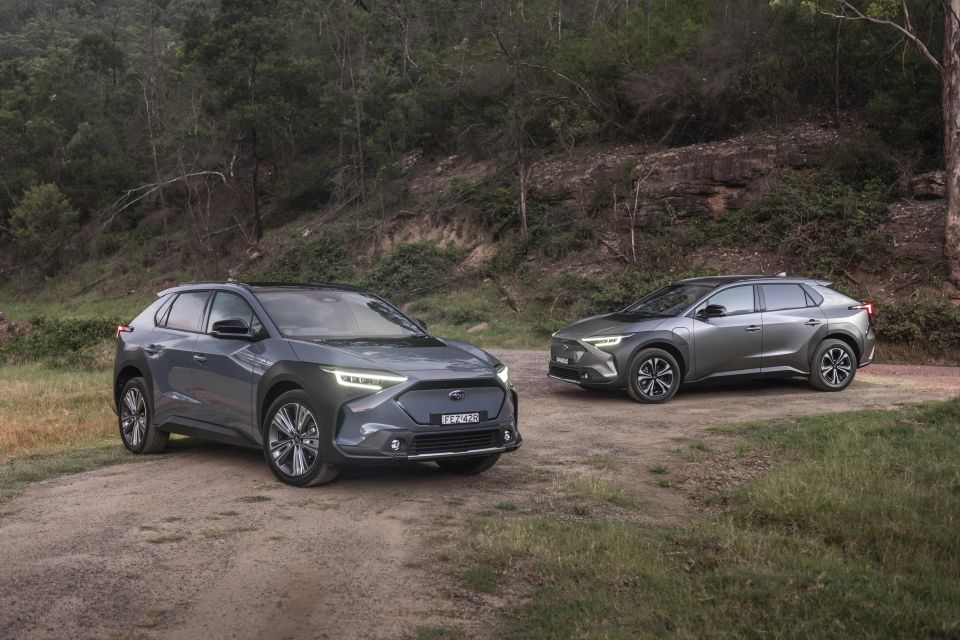
2024 Subaru Solterra pricing:
All prices exclude on-road costs
To see how the Subaru Solterra compares with its rivals, use our comparison tool.
Buy your new car without the stress. It's fast, simple and completely free.

Great service from Travis and team, second time I have used this business would not hesitate to recommend them to anyone
Craig C.
Purchased a Ford Ranger in Sunshine Coast, QLD
CarExpert helped Craig save thousands on his Ford Ranger, now let us save you on your next new car.
Find a dealThe Solterra’s interior is a sea of peculiar design choices.
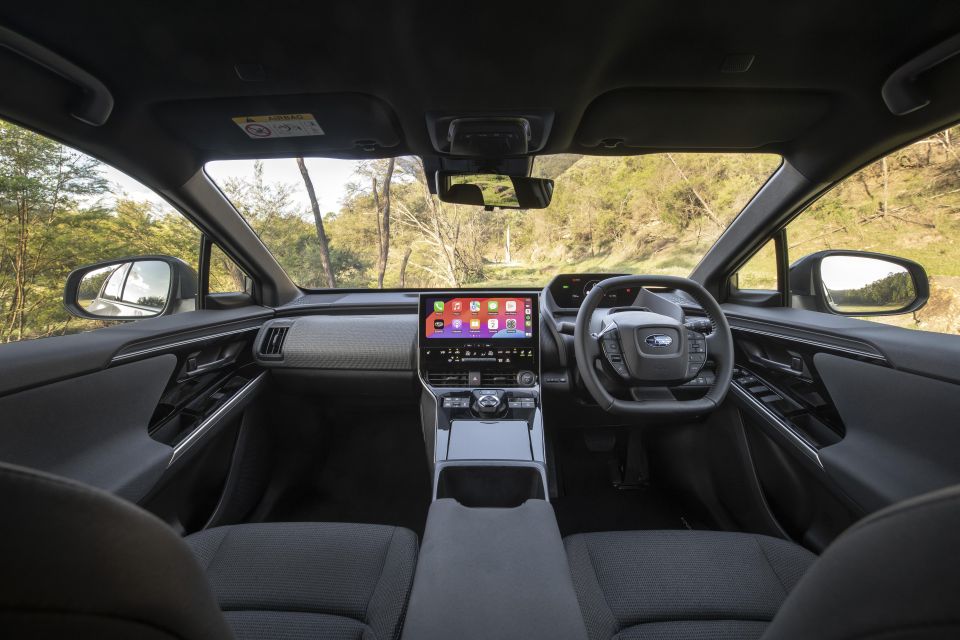
All models have got a squared-off steering wheel, ahead of which sits a high-mounted instrument cluster – like Peugeot’s i-Cockpit, albeit with much less flair.
Depending on your seating and steering wheel position, your view of the instruments may be obstructed.
This instrument cluster has pretty stock standard Toyota graphics, and is visually connected to the steering wheel via an ugly, cheap-looking plastic assembly – let’s call that questionable design choice #1.
Regardless of whether you are in the base or Touring, the dashboard is covered in cloth trim. The idea of that is nice – I appreciate when companies want to break up a big swath of plastic with a different material, so long as it’s not gloss black trim. But in questionable design choice #2, this cloth trim looks recycled – it’s drab, grey and cheap.
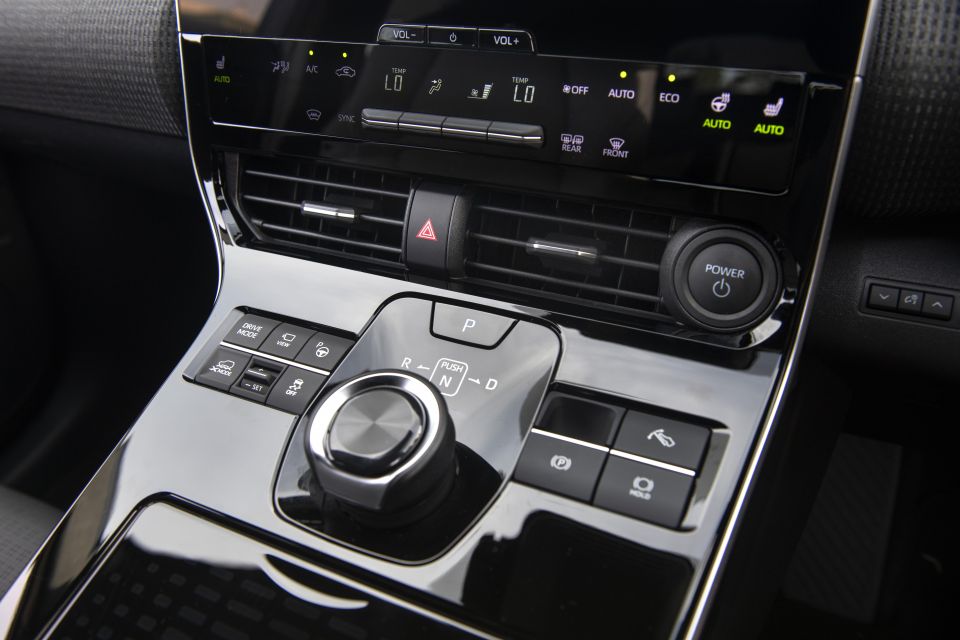
In questionable design choice #3, Subaru has decided to finish the entire centre stack and almost the entire console with gloss black trim.
You can’t even open the cubby in the middle – which houses a wireless phone charger in the Touring, or just a little phone-sized slot and a USB outlet in the base model – without leaving fingerprints.
We know gloss black trim is very much in vogue among carmakers, much to our chagrin, but Subaru has taken this questionable design trend to the extreme. It even surrounds the window controls.
The cloth-upholstered seats in the base model are comfortable, but they don’t look like they belong in a circa-$70,000 car – $40,000, maybe. The leatherette of the Touring is much nicer.

Either way, the front seats have sufficient bolstering to keep you secured in place when the road starts to wind.
More objectionable though, and qualifying as questionable design choice #4 is the drab grey cloth trim on the doors and centre console bin of the Solterra, which looks more befitting of a $25,000 car. At least the door inserts are soft, with soft-touch plastic used on the tops of the front doors as well.
Oh, there’s also no glovebox. If you’re keeping score, that’s questionable design choice #5.
You do get an expansive tray under the centre console, but that’s par for the course for most EVs these days… which also still have a glove box or, in the case of a Hyundai Ioniq 5, a clever sliding drawer.
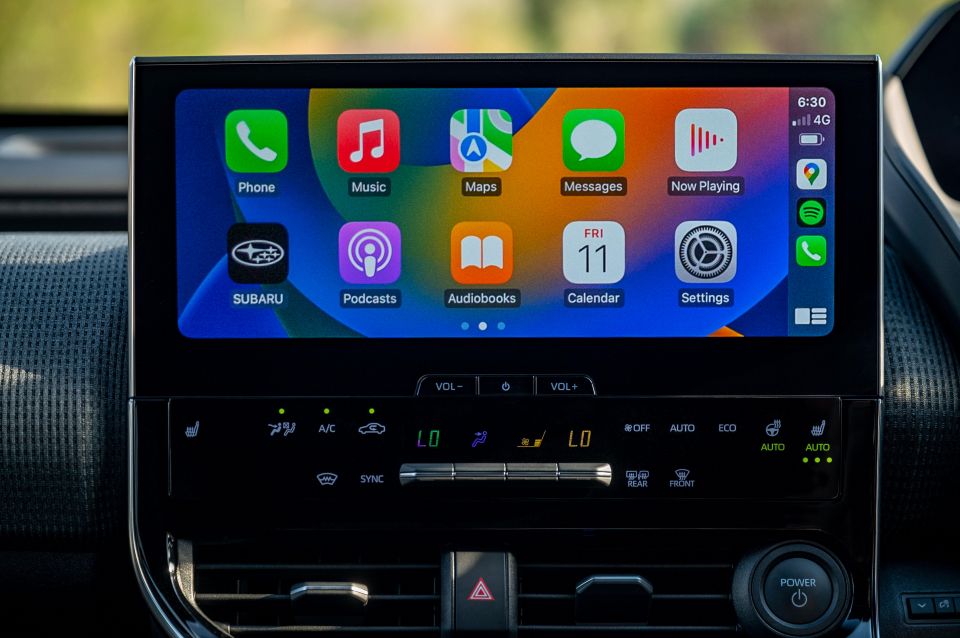

The infotainment system will be familiar to anybody who has been in a recent Toyota or Lexus product, as it’s shared with models from those brands rather than other Subarus. That means the graphics have a neater, more modern look than other Subarus, and there’s also a column of shortcuts anchored to the side of the screen.
Wireless Apple CarPlay and Android Auto connectivity features, and the system boasts good response times and a generally intuitive layout.
There are two rows of touch-capacitive switches below the infotainment screen, but there’s also some more conventional switchgear in the form of knobs for adjusting functions like the volume and rocker switches for the climate control.
These all work well, though the touch-capacitive switches are finished in – you guessed it – gloss black trim.
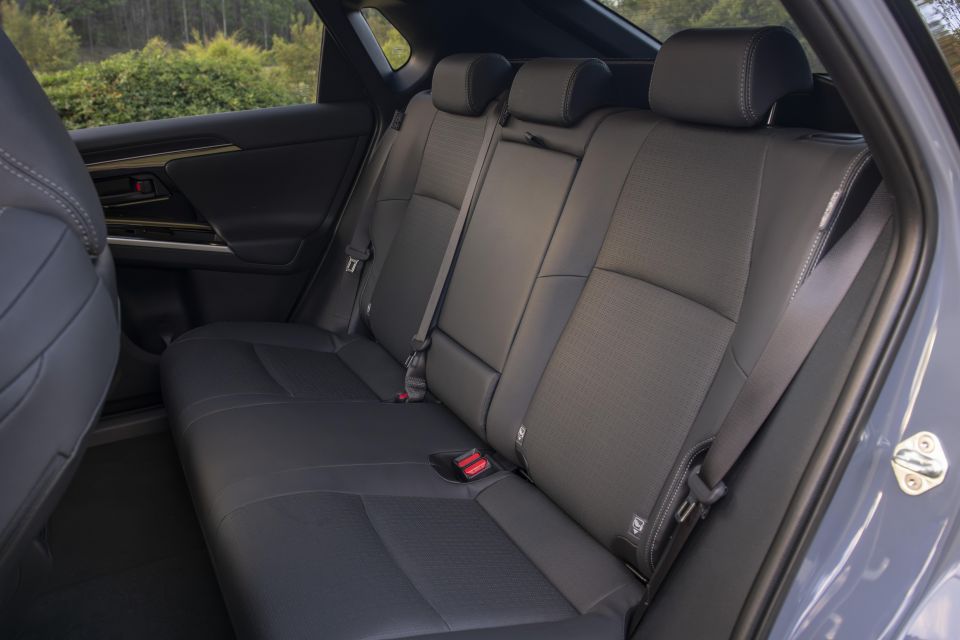
There are controls on the centre console for adjusting the drive mode, and activating features like the camera, X-Mode, and (S-Mode).
The shifter is round, and you twist a ring around it to change gears. It sounds strange, but you get used to it almost immediately.
Stepping into the back, there’s plenty of space. At 180cm tall, I can easily sit behind my seating position with ample legroom, headroom and knee room; the floor is almost completely flat, too. Air vents and two USB-C outlets can be found at the rear of the centre console.
There are three top-tether anchor points for child seats in the back, as well as ISOFIX points for the two outboard seats.
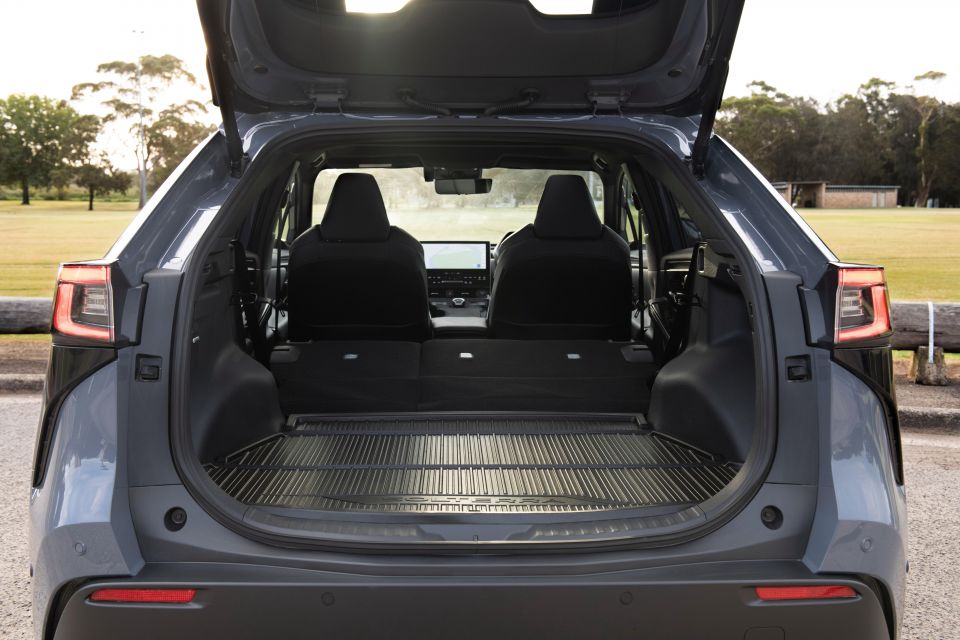
Boot space is 410L, less than a Forester (498L), as well as rival electric SUVs like the EV6 (480L). Under the boot floor, as is par for the course with EVs, there’s a tyre repair kit instead of a spare.
Overall, while the interior is functional, comfortable and spacious, there are various elements we’d like to see changed to give the Solterra an ambience more befitting a vehicle at this price point.
Subaru is bringing the Solterra here exclusively with a dual-motor all-wheel drive powertrain, skipping the single-motor front-wheel drive option offered in the bZ4X as well as the Japanese-market Solterra.

| Model | Subaru Solterra AWD |
|---|---|
| Electric motors | Dual electric motors |
| Total system power | 160kW |
| Total system torque | 337Nm |
| Driven wheels | All-wheel drive |
| Battery | 71.4kWh lithium-ion |
| Tare mass | 2015kg-2060kg |
| Claimed range | 485km (NEDC) |
| Energy consumption (claimed) | 14.1kWh/100km |
| Energy consumption (observed) | 16.6kWh/100km (110km mixed driving) |
| Maximum DC charging rate | 150kW |
| Charging time (10-80 per cent) | 30 minutes (approx.) |
| Maximum AC charging rate | 11kW |
| Charging time (0-100 per cent) | 6.5 hours (approx) |
| Towing capacity | 750kg (braked, unbraked) |
The Solterra said I had 426km of range with the battery at 100 per cent, though the official ADR 81/02 claim – based on the NEDC test cycle – is 485km.
The Solterra drives without much drama.
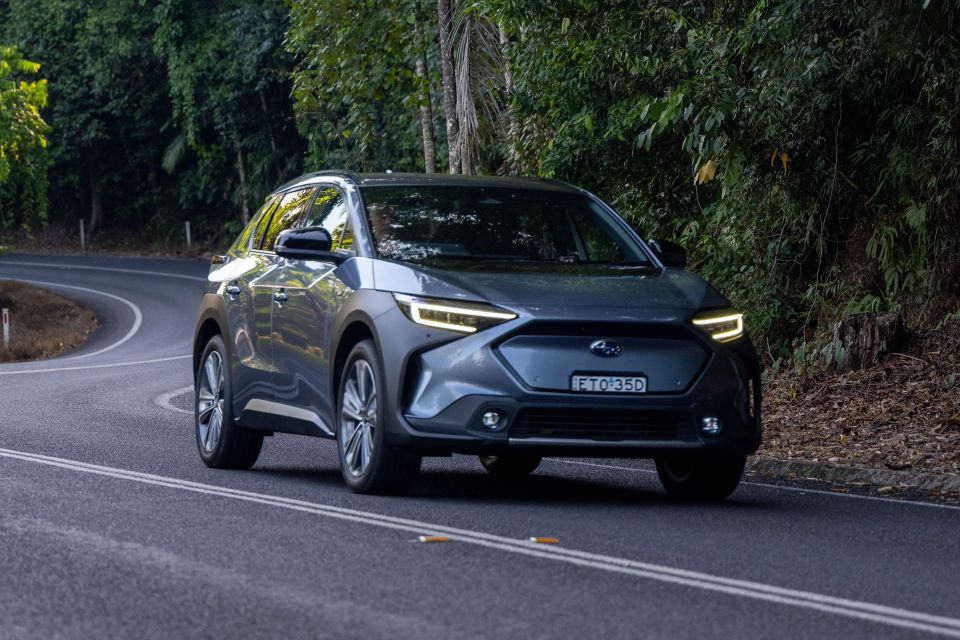
The ride proves comfortable even over rougher, rural roads. Unlike some less well-tuned EVs, it doesn’t have a lumpy ride or the pronounced feeling of a heavy battery pack shifting around.
I didn’t get any time behind the wheel of the Solterra Touring, which upgrades to larger 20-inch wheels which may exact a toll of some sort on ride comfort.
Body control is good, the car settling quickly over bumps and dips – there’s only modest roll in the corners. Handling is secure, and driving this back-to-back with a Forester – Subaru’s combustion-powered mid-sized SUV – reveals the Solterra is the more car-like to drive of the two, feeling more hunkered down.
That’s not altogether surprising, given the placement of the battery undoubtedly gives this a lower centre of gravity.
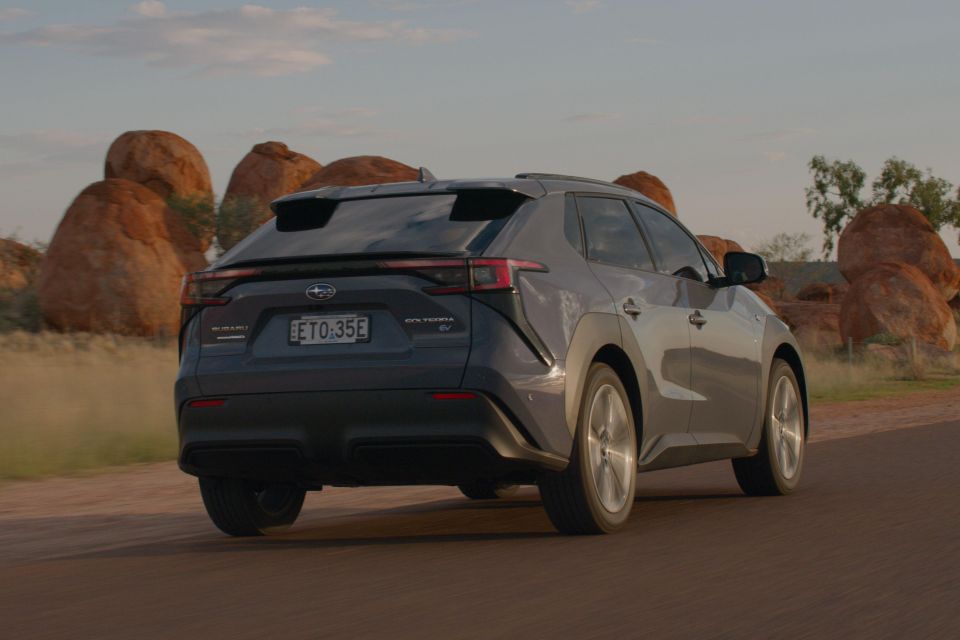
The Solterra’s outputs mightn’t be all that exciting in these days of electric Kias that can do 0-100km/h in 3.5 seconds and Teslas with Ludicrous Mode.
However, the Solterra proves quick enough, and it neither feels like there’s too much power for the chassis nor that there’s not enough power for it to move out of its own way.
The Subaru gets its power to the ground with no drama, and overall it’s thoroughly unintimidating for those new to the world of EVs.
It’s let down by the steering, which feels odd, for lack of a better word. It has a strange amount of artificial resistance, and feels unusually heavy. The squared-off wheel itself feels good, though.
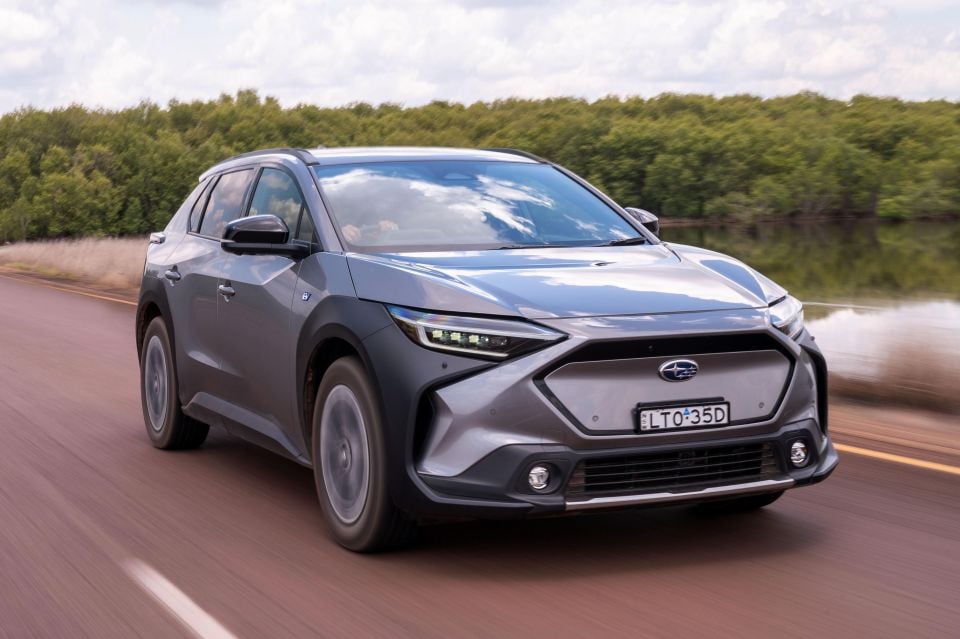
Where expert car reviews meet expert car buying – CarExpert gives you trusted advice, personalised service and real savings on your next new car.
There’s only a slight whistle from the wind over the mirrors, and a bit of a whine from the electric motor under heavy acceleration.
There’s a pretty consistent level of tyre roar over coarser-chip roads. It’s not unrefined, but the Solterra could stand to be quieter.
We also observed a rattle coming from the A-pillar on the driver’s side when we were travelling along coarse-chip roads.
Subaru’s S Pedal Drive – activated either via the left paddle shifter, or a button on the centre console – isn’t a true one-pedal drive mode, even if it’s signified by an icon of a foot hovering over a pedal.
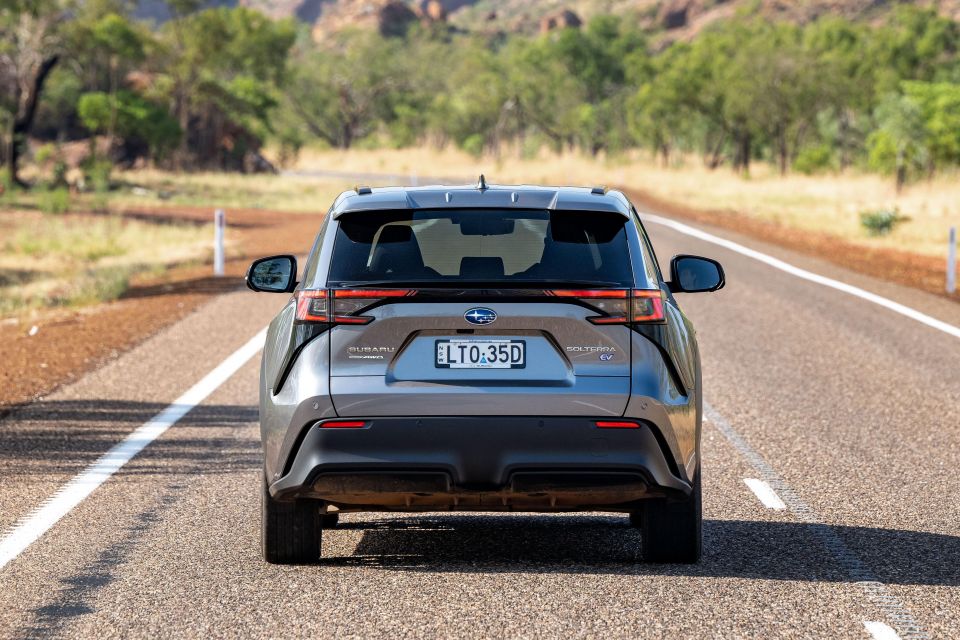
It won’t bring the car to a complete stop and won’t stop it from creeping forward, and is among the least assertive of all the so-called one-pedal drive modes of EVs today. Think of it more as a more aggressive level of regenerative braking. It also can’t be used if the battery is fully charged or close to it.
The adaptive cruise control works well, and when the traffic sign recognition detects a new speed limit you just have to hold one of the cruise control buttons to change it to that speed limit.
The standard lane-keep assist isn’t overbearing, while Lane Tracing Assist does a good job keeping you centred in your lane and isn’t confused by curves in the road.
The driver monitoring system would occasionally flash up a message saying it wasn’t working and to consult the owner’s manual, and on one occasion it told me to sit up even though that’s precisely what I was doing.
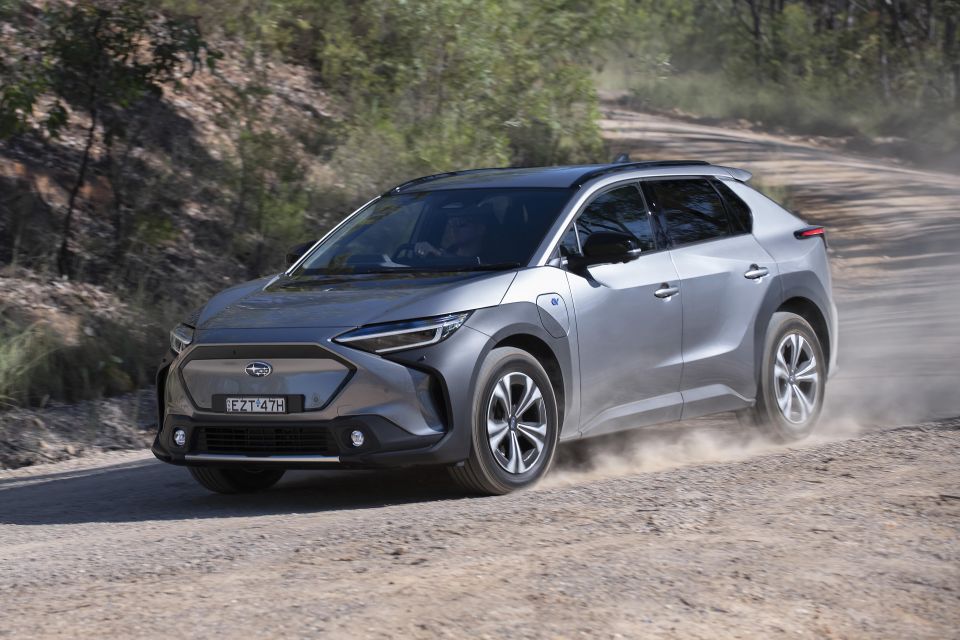
Subaru was keen to show off the Solterra’s off-road bona fides, and to that end we went on an off-road trail. But rather than a typical fire trail, which is about all I’d expect a typical Solterra owner to navigate, we tackled something rather more challenging.
This trail, though short, included some modest water crossings, and was also rocky in parts and featured deep ruts in others. With 212mm of ground clearance, the Solterra is well up on the likes of the Model Y (167mm), Ioniq 5 (141mm), EV6 (160mm) and Mustang Mach-E (172mm).
We drove this back-to-back with a Forester, which has 220mm of ground clearance. I felt a little more comfortable driving the Forester off-road, but that was perhaps more because of the familiar noises it makes. Not once did we get either vehicle stuck.
Like the Forester, the Solterra has X-Mode. This in turn features two modes, both of which mimic a limited-slip differential by applying the brakes on spinning wheels when driving on bumpy surfaces.

There’s a Snow/Dirt mopde, which is designed to reduce slip, and Deep Snow/Mud, which encourages slipping to help the vehicle plough through muck.
Unlike the Forester, there’s a new function called Grip Control. Working only when X-Mode is active, it functions as a kind of low-speed cruise control, and keeps the vehicle travelling at a constant speed of approximately 2-10km/h. It’s easy to adjust the set speed using either the brake or accelerator, and the feature works well.
The surround-view camera boasts a fairly high resolution, and makes it easier to see where you’re going off the beaten track. The transparent chassis view is also handy, too.
There are just two trim levels available.
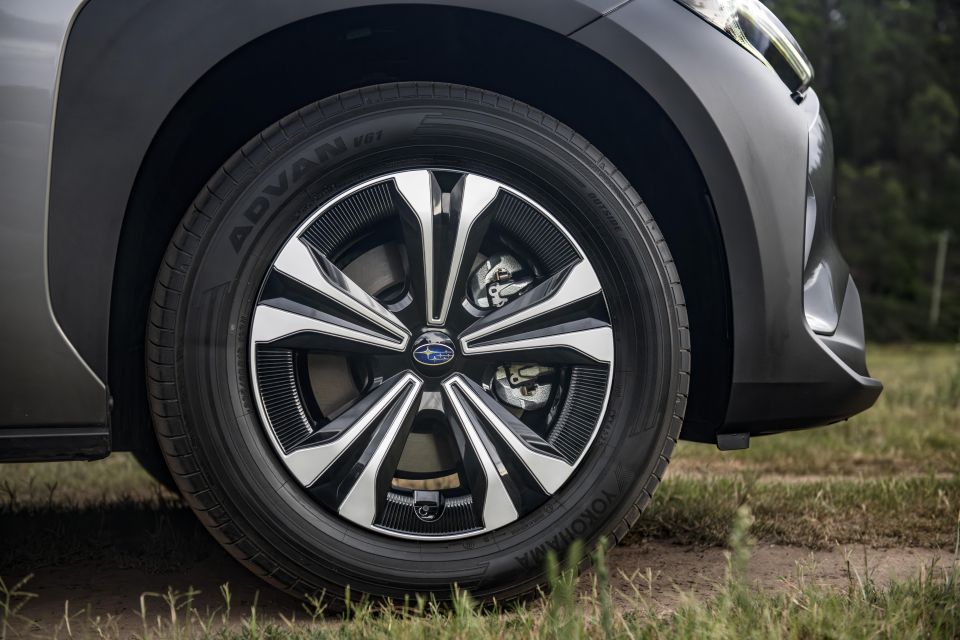

Solterra AWD highlights:
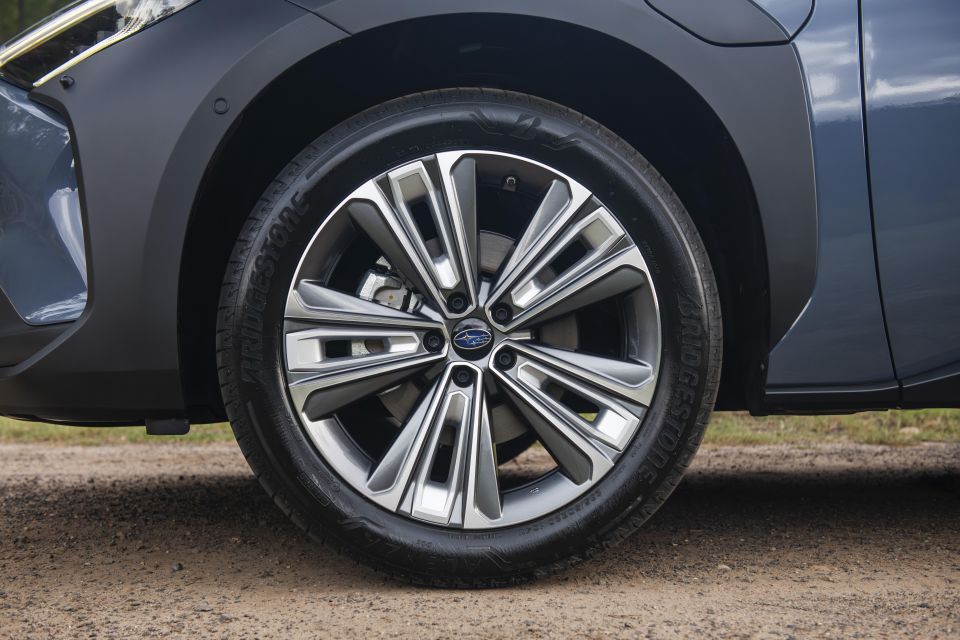

Solterra AWD Touring adds:
The Subaru Solterra has a five-star ANCAP safety rating, based on testing conducted by Euro NCAP on the bZ4X in 2022.
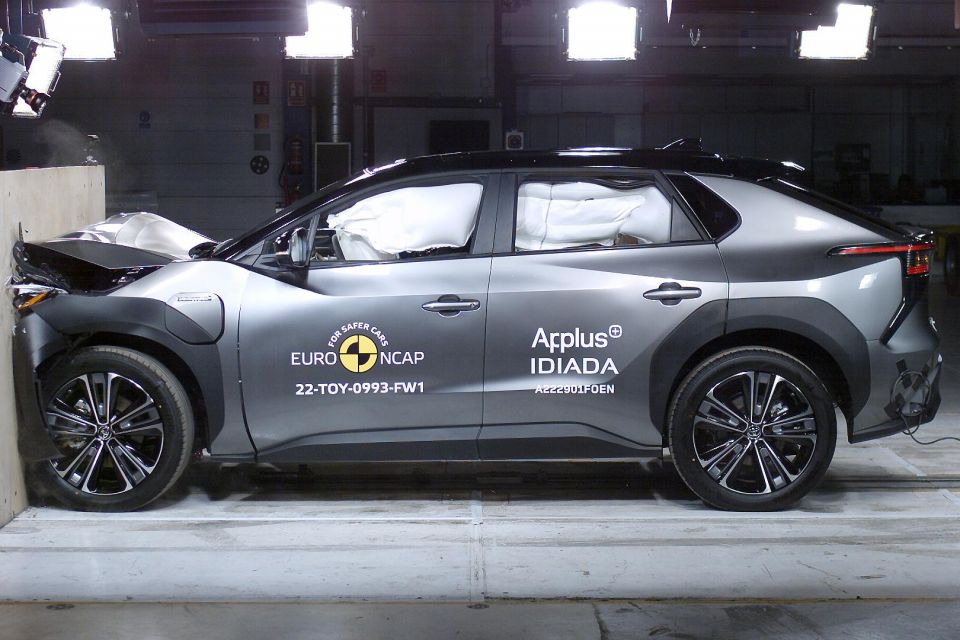
It received an adult occupant protection rating of 88 per cent, a child occupant protection rating of 88 per cent, a vulnerable road user protection rating of 79 per cent, and a safety assist rating of 93 per cent.
Standard safety equipment includes:
The Solterra is backed by a five-year, unlimited-kilometre vehicle warranty; plus an eight-year, 160,000km battery warranty.

Subaru is offering free servicing for the first five years or 75,000km – with intervals of 12 months or 15,000km. There’s also five years of roadside assistance.
The company is offering a choice of either an Ocular LTE single-phase 7kW Type 2 wallbox for $2250 including installation, or a three-phase 22kW unit for $2645.
It’s very clear from Subaru’s launch program that the company wants to pitch the Solterra as more rugged than its rivals, giving it a unique selling point.
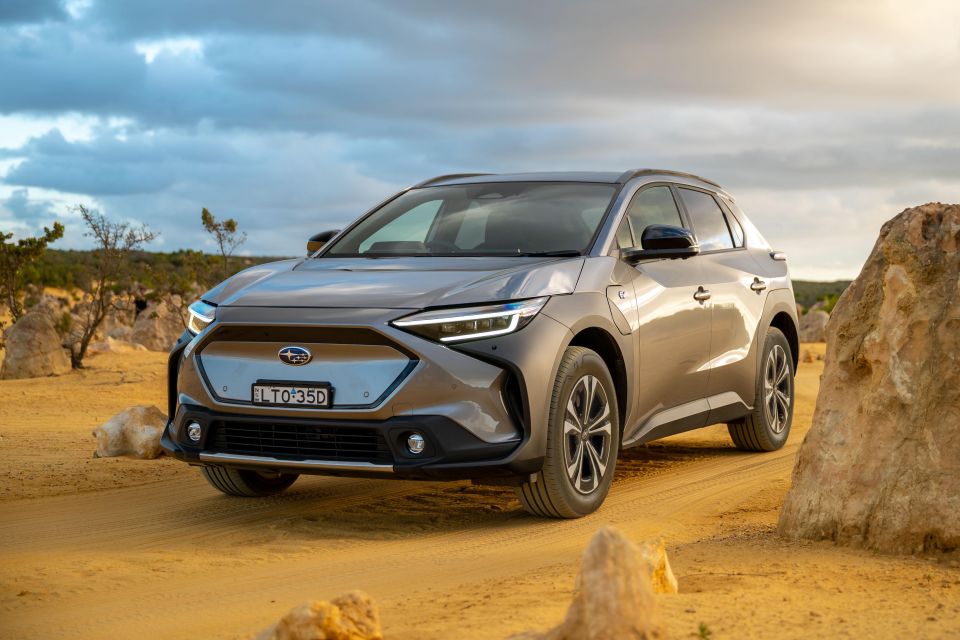
Why else would the company encourage us to take a mid-sized electric SUV on trails where we dare say most owners wouldn’t venture?
The Solterra needs a USP because it has arrived late, right as this segment is really heating up. The recent price cuts show Subaru is taking the competition very seriously. The Model Y has its show-stopping tech, the Ioniq 5 its bold retro-futuristic looks, the EV6 and Mustang Mach-E their dynamics.
With the Solterra having fairly conservative styling and unexciting specifications, that leaves its off-road ability as the reason you would choose it over the others – it’s not the quickest vehicle in its segment, nor does it offer the most range or the more stylish looks.
That’s not to say it’s its only talent. The vehicle has a spacious and comfortable interior, if one with some odd design choices, and it boasts a pliant ride.
It’s broadly competent, but it doesn’t excite – it fits right in in the Subaru lineup, then.
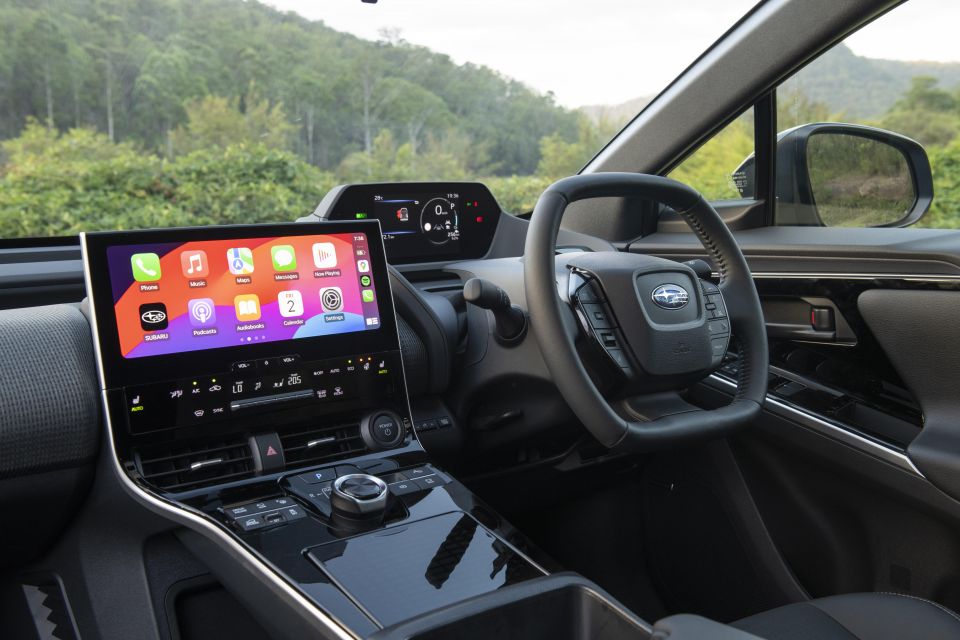
Click the images for the full gallery
MORE: Buy a Subaru Solterra MORE: Everything Subaru Solterra
Where expert car reviews meet expert car buying – CarExpert gives you trusted advice, personalised service and real savings on your next new car.
William Stopford is an automotive journalist with a passion for mainstream cars, automotive history and overseas auto markets.


Damion Smy
14 Hours Ago


Damion Smy
15 Hours Ago


Damion Smy
17 Hours Ago


Damion Smy
19 Hours Ago


Damion Smy
20 Hours Ago


Damion Smy
21 Hours Ago